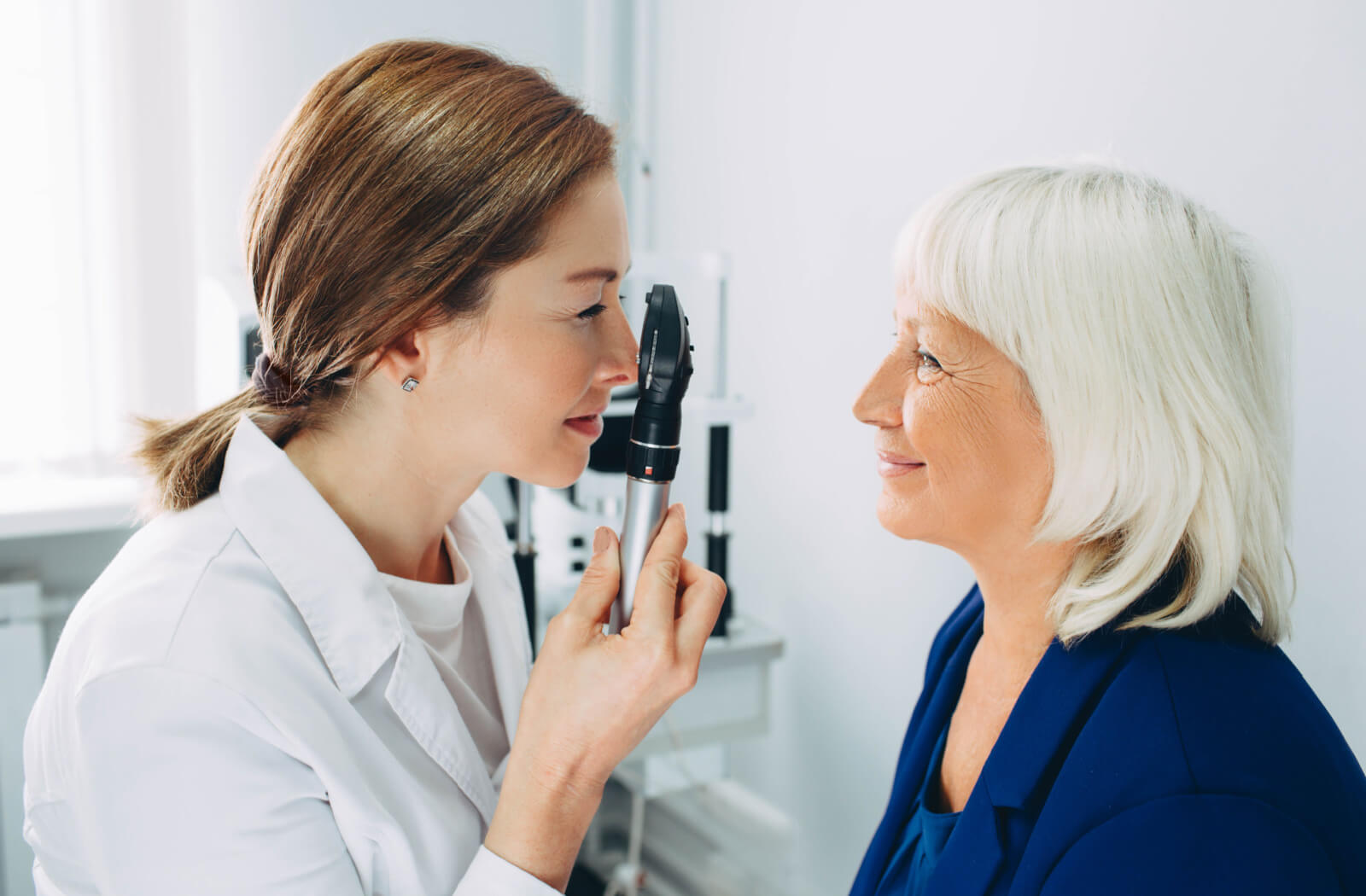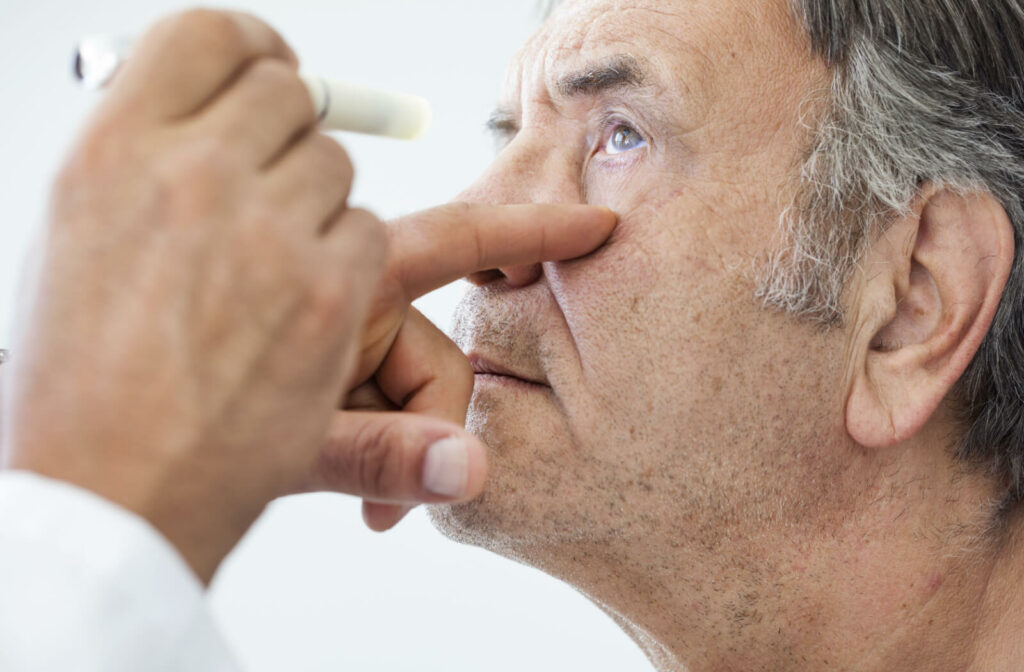Your eyes are your windows to the world, constantly working to process information and keep you connected to your surroundings. But as with any important system, they can be vulnerable to diseases and conditions that compromise their function over time. That’s why it’s crucial to schedule regular comprehensive eye examinations with your eye care professional.
Some eye diseases and conditions that can be detected in an eye exam include:
- Glaucoma
- Age-related Macular Degeneration (AMD)
- Diabetic Retinopathy
- Retinal Detachment
- Cataracts
- Cancer
Not all these diseases are vision-threatening and require treatment right away. For example, cataracts may cause a decrease in vision over time but don’t necessarily need surgical intervention until they progress to the point of affecting your daily life. But once your doctor diagnoses an eye disease or condition, they can instruct you on managing it or recommend effective treatments.

Diseases That Can be Detected in an Eye Exam
Your eye doctor can diagnose several different diseases and conditions during a comprehensive eye examination.
Glaucoma
One of the most common eye diseases that can be detected during an exam is glaucoma. This condition typically results from a buildup of pressure in the eye, except normal-tension glaucoma, which damages the optic nerve. This optic nerve damage can lead to progressive vision loss. During your exam, your eye doctor can measure your intraocular pressure and closely examine your optic nerve for any signs of damage or deterioration.
AMD
Another common condition that eye exams can detect is AMD. This progressive disease typically occurs in older adults. It can cause a loss of central vision due to damage to the macula, the part of the retina responsible for sharp, clear vision. Your eye doctor can detect AMD through a series of tests, including a visual acuity test, a dilated eye exam, and optical coherence tomography (OCT) imaging.
Diabetic Retinopathy
Individuals with diabetes are at risk for a range of eye problems, including diabetic retinopathy. This condition occurs when high blood sugar levels damage the blood vessels in the retina, leading to impaired vision and, in severe cases, blindness.
Your doctor can examine the blood vessels in your retina during a comprehensive eye exam with eye dilation or a diabetic eye examination. By checking these blood vessels and the structures at the back of the eye, your eye doctor can observe any signs of damage and may recommend further testing or treatment as needed.
Retinal Detachment
A retinal detachment is a serious condition in which the retina becomes separated from its underlying tissues, leading to blindness if left untreated. During a comprehensive eye exam, your doctor will examine your retina for any signs of detachment, which may require prompt surgical intervention to repair.
Cataracts
Cataracts are a common age-related condition that can cloud the lens of the eye, leading to blurry vision and decreased visual acuity. A comprehensive eye exam can detect the presence of cataracts, allowing for prompt treatment that can improve your vision and overall quality of life. Your doctor may also recommend lifestyle changes or surgical interventions to manage cataracts over time.
Cancer
Your eye doctor can look for certain types of cancer like retinoblastoma, melanoma, and even signs of leukemia during an eye exam. Sometimes, eye exams can also reveal signs of brain tumors. However, it’s important to remember that an eye exam isn’t a definitive test for cancer. If your eye doctor sees something suspicious, they’ll likely refer you to a specialist for further testing.
Keratoconus
Keratoconus is a condition where your eye’s cornea, which is typically round, thins and starts to bulge into a cone-like shape. This change in shape can cause your vision to become distorted and blurry, as it prevents your eye from focusing correctly. It’s a pretty rare condition, and researchers aren’t exactly sure what causes it, but it’s typically linked to genetic factors and certain allergic conditions.
Dry Eye Disease
Dry eye disease is a condition where your eyes don’t produce enough tears or the right quality of tears to stay properly lubricated. It can make your eyes feel scratchy or irritated, like there’s something in them. You might also experience a stinging or burning sensation. It’s more common as you get older, but certain medical conditions or even some medications can cause it, too.
Book Your Next Comprehensive Eye Examination
Not all eye conditions are dangerous—dry eye is most often annoying or uncomfortable at worst. However, some diseases can result in vision loss over time or even quickly. So, it’s important to see your eye doctor for regular eye exams. The American Academy of Ophthalmology recommends comprehensive eye examinations every 1 to 2 years based on age, overall eye health, and any risk factors you may have.Your eye doctor knows your eye health, so they can provide you with a customized schedule based on your situation. Contact us at The Vision Place to request an appointment if it’s time for your next eye exam or if you’re having any troubling symptoms. Our team is happy to get you in to see one of our experienced optometrists.


